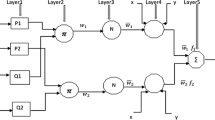Abstract
In contrast to city-level and larger aggregate-level load forecasting, load forecasting for residential customers is a much more challenging problem because residential loads are much more volatile. In order to forecast the residential load at one-hour interval 24-h loads the day before, a 2-Step SARIMAX method for residential load forecasting is proposed in this study. The forecasting performance of the proposed method is compared with the existing forecasting methods including SARIMA.









Similar content being viewed by others
References
Korea Electric Power Corporation (2021) 2020 year KEPCO in Brief
Ministry of Trade, Industry and Energy (2020) 9th Basic plan for long-term electricity demand and supply (2020~2034)
Deb C, Zhang F, Yang J, Lee SE, Shah KW (2017) A review on time series forecasting techniques for building energy consumption. Renew Sustain Energy Rev 74:902–924
Ahmad MI (2017) Seasonal decomposition of electricity consumption data. Rev Integr Bus Econ Res 6(4):902–924
Hussain T, Muhammad K, Ser JD, Baik SW, de Albuquerque VHC (2020) Intelligent embedded vision for summarization of multiview videos in IIOT. IEEE Trans Ind Inf 16(4):2592–2602
Krizhevsky A, Sutskever I, Hinton GE (2012) ImageNet classification with deep convolutional neural networks. In: Proceedings of the advances neural information processing systems, pp 1097–1105
Jeong HC, Jung J, Kang BO (2018) Development of ARIMA-based forecasting algorithms using meteorological indices for seasonal peak load. Trans Korean Inst Electr Eng 67:1257–1264
Juberias G, Yunta R, Moreno JG, Mendivil C (1999) A new ARIMA model for hourly load forecasting. In: Transmission and distribution conference. IEEE, pp 314–319
Elamin N, Fukushige M (2018) Modeling and forecasting hourly electricity demand by SARIMAX with interactions. Energy 165(Part B):257–268
Shi H, Xu M, Li R (2018) Deep learning for household load forecasting—a novel pooling deep RNN. IEEE Trans Smart Grid 9(5):5271–5280
Quilumba FL, Lee WJ, Huang H, Wang DY, Szabados RL (2015) Using smart meter data to improve the accuracy of intraday load forecasting considering customer behavior similarities. IEEE Trans Smart Grid 6(2):911–918
Hong T, Wang P, Pahwa A, Gui M, Hsiang SM (2010) Cost of temperature history data uncertainties in short term electric load forecasting. In: Proceedings of IEEE 11th international conference on probabilistic methods applied to power systems (PMPS), Singapore, pp 212–217
Hong T, Wang P, White L (2015) Weather station selection for electric load forecasting. Int J Forecast 31(2):286–295
Chen Y et al (2010) Short-term load forecasting: similar day-based wavelet neural networks. IEEE Trans Power Syst 25(1):322–330
Al-Otaibi R, Jin N, Wilcox T, Flach P (2016) Feature construction and calibration for clustering daily load curves from smart-meter data. IEEE Trans Ind Inf 12(2):645–654
Shi D, Li R, Shi R, Li F (2014) Analysis of the relationship between load profile and weather condition. In: Proceedings of IEEE PES Gen. meeting Conf. Expo., National Harbor, MD, USA, pp 1–5
Aggarwal SK, Kumar M (2016) ANN based residential demand forecasting using weather and special day information. In: 7th India international conference on power electronics (IICPE), pp 1–5
Cho MY, Hwang JC, Chen CS (1995) Customer short term load forecasting by using ARIMA transfer function model. In: IEEE conference on energy management and power delivery, vol 1, pp 317–322
Lee G-C, Han J (2020) Forecasting gas demand for power generation with SARIMAX models. Korean Manag Sci Rev 67–78
Box GEP, Jenkins GM, Reinsel GC (2008) Time series analysis forecasting and control, 4th edn. John Wiley and Sons
Jeong HC, Jang M, Kim T, Joo S-K (2021) Clustering of load profiles of residential customers using extreme points and demographic characteristics. Electronics 10
Zeng J, Wang J, Guo L, Fan G, Zhang K, Gui G (2019) Cell scene division and visualization based on autoencoder and K-means algorithm. IEEE Access 7:165217–165225
Enders W (2004) Applied econometric time series, 2nd edn. Wiley
Al-Musaylh MS, Deo RC, Adamowski JF, Li Y (2018) Short-term electricity demand forecasting with MARS, SVR, and ARIMA models using aggregated demand data in Queensland, Australia. Elsevier 35:1–16
Acknowledgements
This work was supported by the Korea Institute of Energy Technology Evaluation and Planning(KETEP) and the Ministry of Trade, Industry & Energy(MOTIE) of the Republic of Korea (No. 20181210301430). This research was supported by the Basic Research Program through the National Research Foundation of Korea(NRF) funded by the MSIT(No. 2020R1F1A1075872).
Author information
Authors and Affiliations
Corresponding author
Additional information
Publisher's Note
Springer Nature remains neutral with regard to jurisdictional claims in published maps and institutional affiliations.
Rights and permissions
About this article
Cite this article
Kim, T., Jang, M., Jeong, H.C. et al. Short-Term Residential Load Forecasting Using 2-Step SARIMAX. J. Electr. Eng. Technol. 17, 751–758 (2022). https://doi.org/10.1007/s42835-021-00917-z
Received:
Revised:
Accepted:
Published:
Issue Date:
DOI: https://doi.org/10.1007/s42835-021-00917-z




